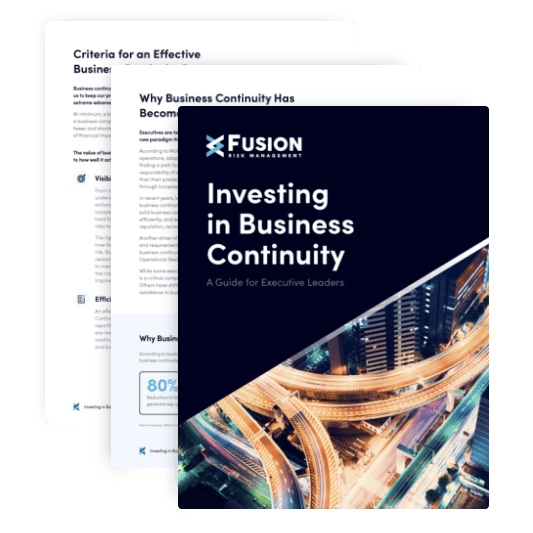This website uses cookies so that we can provide you with the best user experience possible. Cookie information is stored in your browser and performs functions such as recognising you when you return to our website and helping our team to understand which sections of the website you find most interesting and useful.

Download the Guide!
At some point, your business will be disrupted by an adverse event—a data breach, a supply chain crisis, a natural disaster, or something else. You can’t know the future, and yet you have to know what you’ll do about it.
This guide can help. You’ll learn:
- Why business continuity has become an executive priority
- Why compliance should not be your primary incentive
- The three building blocks of an effective business continuity program
Read the guide now and see how you can stay ready for anything.
Preview
In recent years, Business Continuity programs have become a critical component of risk management, as organizations seek to mitigate the risk of natural, man-made, geo-political, and public health catastrophes.
Business continuity strikes at the heart of the fiscal and fiduciary responsibilities of the executive team. Strong arguments can be made that a solid business continuity program can more than pay for itself in fiscal benefits while simultaneously minimizing the probability, impact, and duration of a disruption. This whitepaper provides the guidance that every executive should have to ensure that their business continuity program aligns with their business vision and operations.
